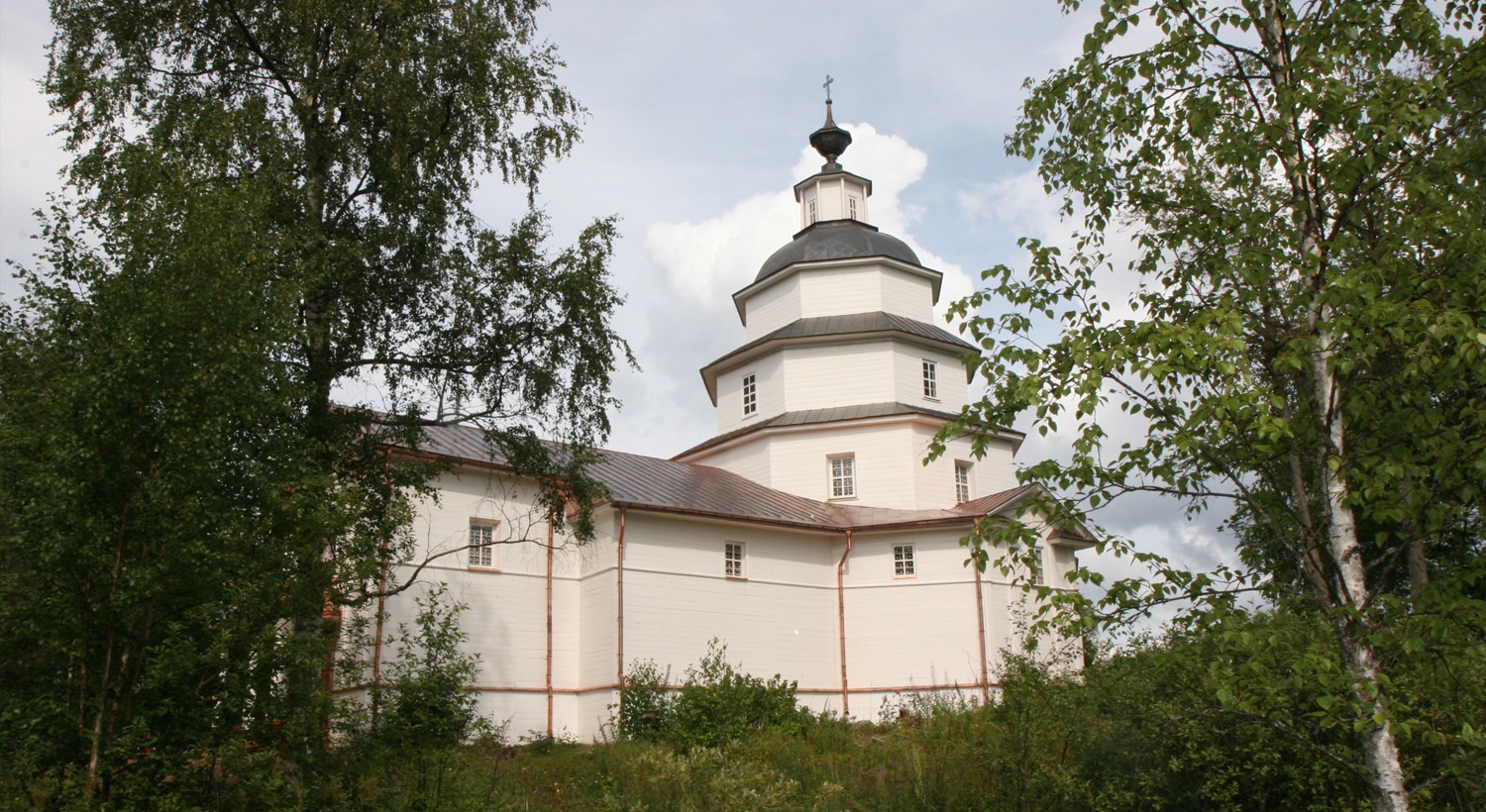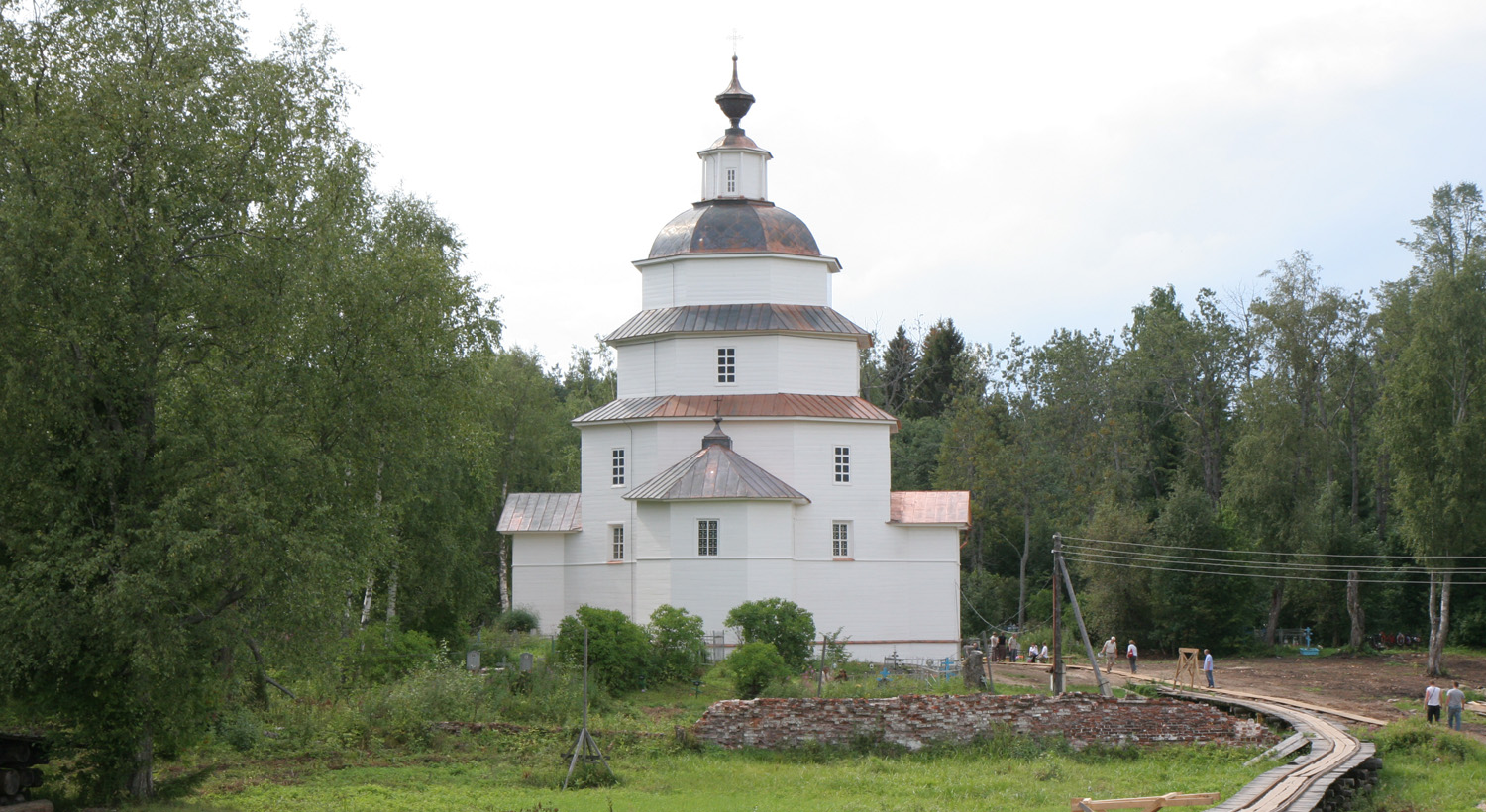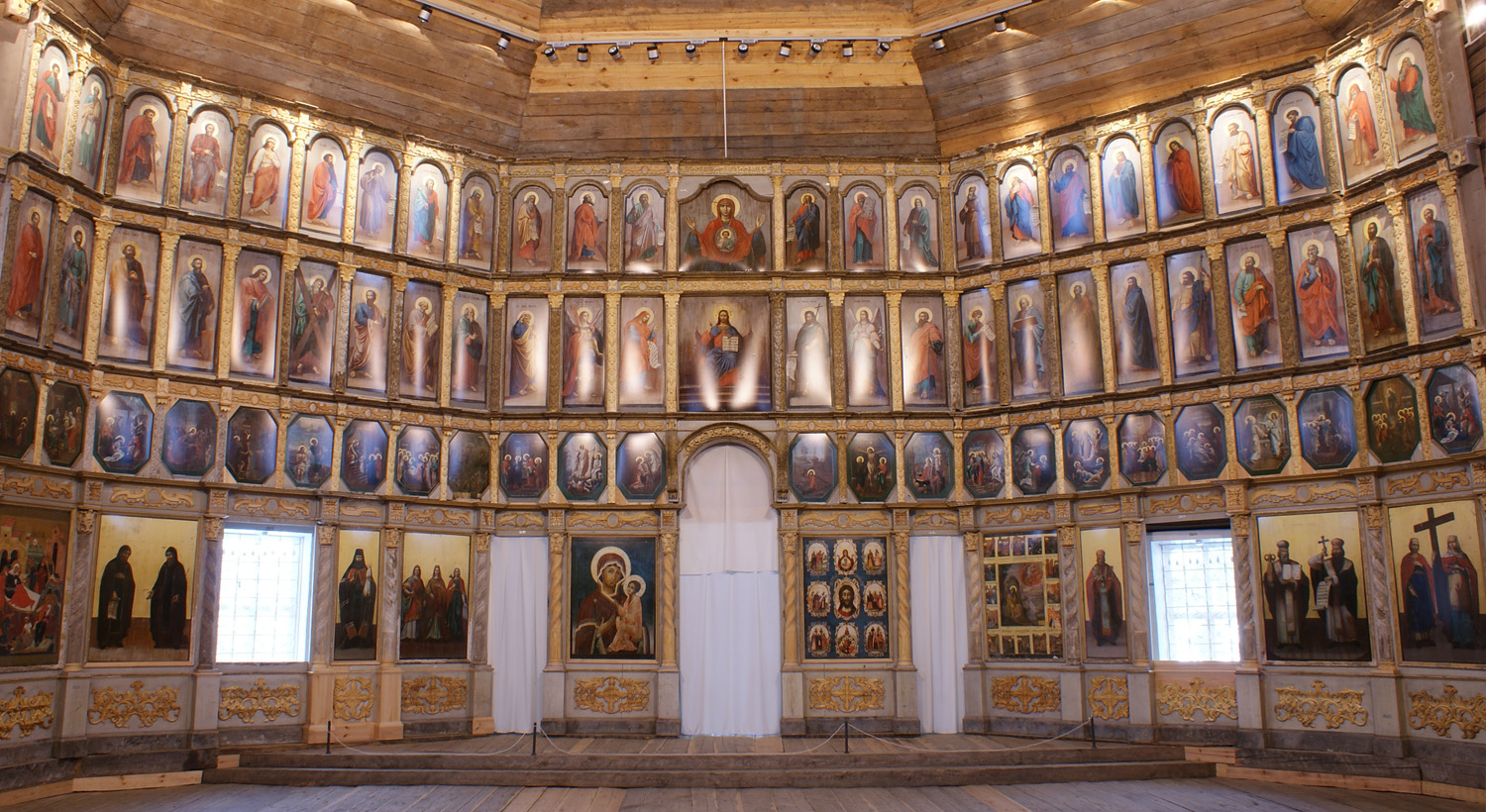
Tsypino museum complex
Church of Elias the Prophet
1755
Church of Elias the Prophet
| Address: | Kirillov district, Vologda region, Russia |
| Place: | Tsypino museum complex |
| Created time: | 1755 |
| Matherial: | Wood |
| Category: | Architectural monuments |
The Church of Saint Prophet Elijah (1755) is a monument of wooden architecture situated in the churchyard on the bank of Lake Ilyinskoye. The 19th-century four-tier iconostasis is reconstructed in the interior of the tent-shaped church. The following permanent exhibitions are presented in the galleries and the porch: “Peasants of the Tsypino Parish”, “History of the Brilliantovs”, and “Restoration of the Church of Saint Prophet Elijah. 2002-2009”.
The wooden Church of Saint Prophet Elijah is situated 1.5 km south of the Ferapontovo Monastery, on the northern bank of Lake Ilyinskoe.
The Church of Saint Prophet Elijah was first mentioned in the documents in 1533. It was consecrated again in 1635, probably because of the church desecration during the Polish-Lithuanian devastation. In 1734, there were two wooden churches in Tsypino: the summer (unheated) Church of Saint Prophet Elijah and the winter (heated) Church of Saint Demetrius of Thessaloniki. In 1800, the stone Church of Saint Demetrius was erected on the place of the dilapidated wooden building. A dynasty of priests can be traced in the Tsypino parish on the basis of the documents found by the museum employees. It began in the late 18th century and ended in the 1930s. The fate of the Ilyinskoe parish and its churches in the 20th century was tragic. The last priest of Tsypino was shot in 1931 and the parish was closed. The priests’ families departed to other places of the huge country for fear of persecution. In 1953, the stone Church of Saint Demetrius of Thessaloniki with the belfry was blown up. The dome of the wooden Church of Saint Prophet Elijah collapsed in May 1958.
Several attempts to restore the Church of Saint Prophet Elijah were made during the second half of the 20th century. But its full-scale restoration with the use of advanced techniques began only in 2003. The architect A.V. Popov headed the work completed in 2009.




